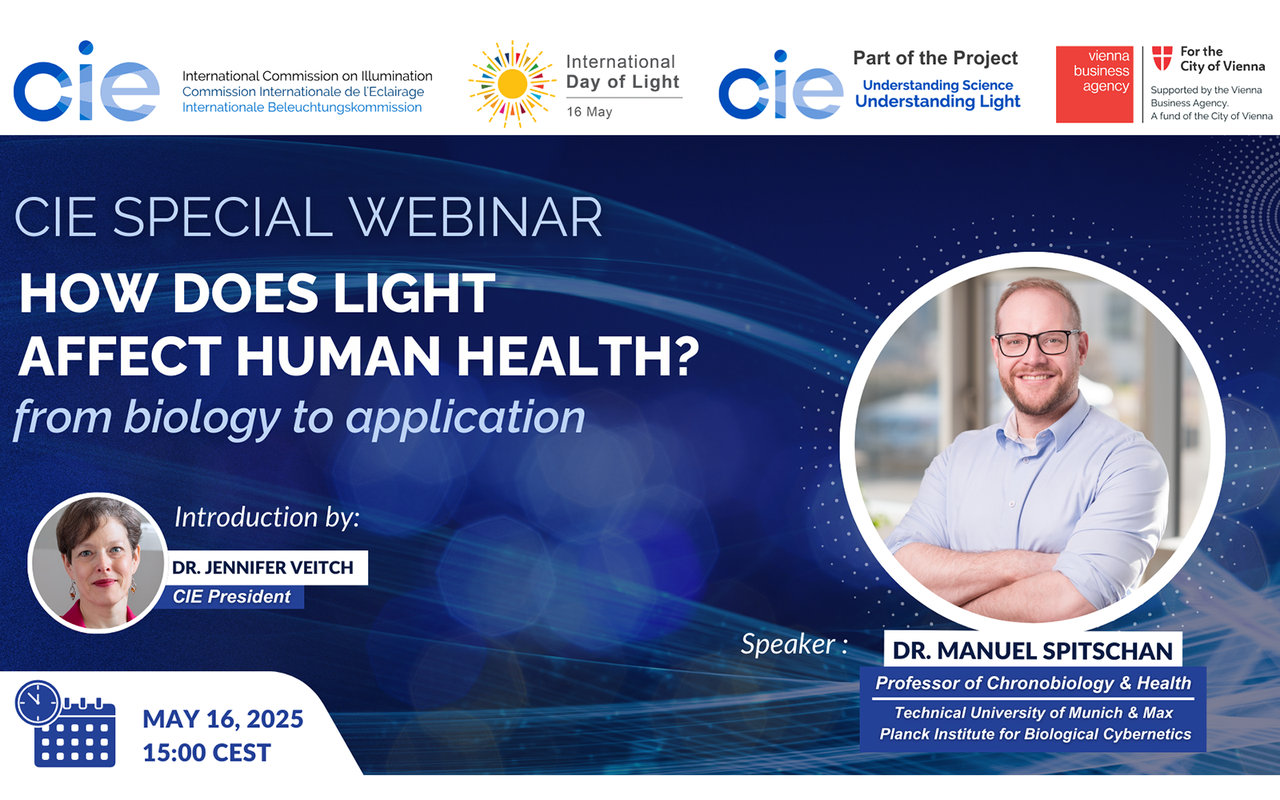Webinar: How does Light Affect Human Health? From Biology to Application.
Join this exclusive CIE webinar exploring the vital connections between light and human health. Titled “How does light affect human health? From biology to application”, the webinar will be presented by Prof. Dr. Manuel Spitschan, Professor of Chronobiology & Health at the Technical University of Munich & Max Planck Institute for Biological Cybernetics.
Celebrate the International Day of Light with the CIE on May 16th, 2025!
Dr. Jennifer Veitch, CIE President, will open the webinar with an introduction to the CIE, an overview of the new CIE project "Understanding Science - Understanding Light", and a welcome to our speaker.
May 16th also marks the launch of the Ladenburg Initiative communications campaign, a collaborative effort to translate scientific insights on light and health into public awareness and policy. Coordinated by Prof. Dr. Manuel Spitschan, the initiative brings together key organizations, including the International Commission on Illumination (CIE), Society for Light, Rhythms and Circadian Health (SLRCH formerly SLTBR), the Daylight Academy (DLA), the Good Light Group, and the Center for Environmental Therapeutics.
Talk Abstract
As we go about our daily lives, we are exposed to a variety of light sources—from the moment we wake up until we go to bed, and for some, even while they sleep. Light allows us to see, perceive, and navigate our surroundings, as well as appreciate the world’s vibrant details. But beyond vision, light plays a fundamental role in regulating our bodies, setting our internal clock, aligning our physiology with the rhythms of day and night. Over the past 25 years, research has uncovered simple yet effective strategies to help us use this knowledge to support our health and well-being.
About the Speaker
Dr. Manuel Spitschan is an Assistant Professor of Chronobiology & Health at the TUM School of Medicine and Health, Technical University of Munich and a Research Group Leader at the Max Planck Institute for Biological Cybernetics. His research explores how light affects human circadian rhythms, sleep, and visual physiology, with a focus on the spectral, spatial, and temporal properties of light and their implications for health and well-being. He studied psychology at the University of St Andrews (2009–2012) before earning his PhD at the University of Pennsylvania (2012–2016), where he investigated melanopsin sensitivity in the human visual system. After a postdoctoral fellowship at Stanford University (2016–2017), he was awarded a Sir Henry Wellcome Postdoctoral Fellowship, enabling collaborative research at the University of Oxford and the Centre for Chronobiology in Basel (2017–2021).
Dr. Spitschan is the Speaker of the Steering Committee of the Daylight Academy, Chair of the Joint Technical Committee 20 of the CIE, and Board Member of the Society for Light, Rhythms, and Circadian Health (SLRCH, formerly SLTBR). Committed to open science, science communication, and interdisciplinary collaboration, he actively works to bridge the gap between research and real-world applications at the intersection of light and the circadian clock.
© 2025 Luger Research e.U. – Institute for Innovation & Technology

